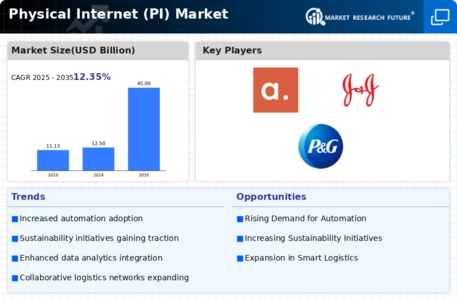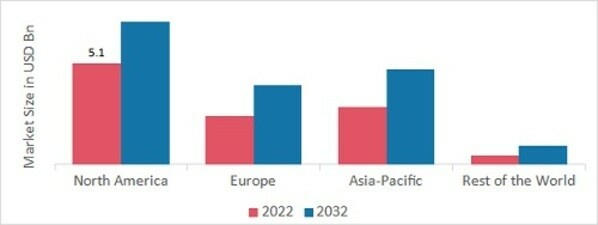Physical Internet Market Summary
As per Market Research Future Analysis, the global Physical Internet (PI) market was valued at USD 15.87 Billion in 2024 and is projected to grow from USD 16.12 Billion in 2025 to USD 31.43 Billion by 2035, with a compound annual growth rate (CAGR) of12.19% during the forecast period. Key drivers include the potential for a worldwide networked logistics system, increasing interest in zero-emission logistics, and the rapid growth of e-commerce. However, challenges such as the need for a conceptual shift towards the physical internet and the demand for education and skill development persist. The market is characterized by significant advantages like improved freight transit and reduced costs, marking a transformative shift in logistics efficiency and sustainability.
Key Market Trends & Highlights
The Physical Internet (PI) market is witnessing notable trends driven by sustainability and technological advancements.
- Logistic nodes segment dominated the market in 2024 due to increasing preference.
- Solution segment led the component market in 2024, highlighting the importance of integrated logistics solutions.
- Large enterprises held the majority share in the organization size segment in 2024, reflecting their significant investment in PI.
- Retail & e-commerce was the leading vertical in 2024, driven by exponential growth in online shopping.
Market Size & Forecast
| 2024 Market Size | USD 15.87 Billion |
| 2025 Market Size | USD 16.12 Billion |
| 2035 Market Size | USD 31.43 Billion |
| CAGR | 12.19% |
Major Players
Key players include Amazon.com Inc., UPS, AmeriCold Logistics LLC, Mercedes-Benz Group AG, SF Express Co. Ltd., Yamato Logistics Ltd., DHL, FedEx Corporation, Velove Bikes AB, and MIXMOVE.














